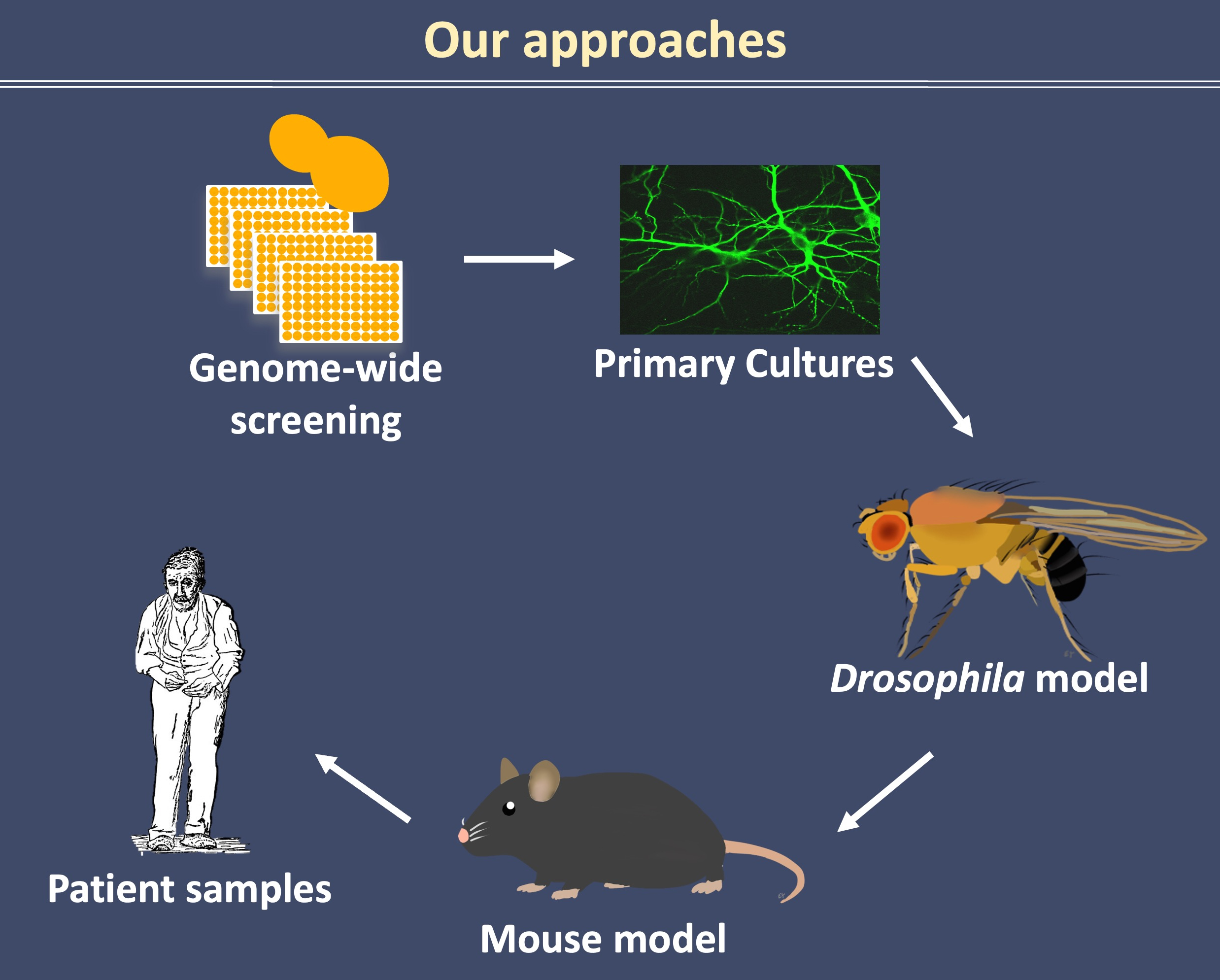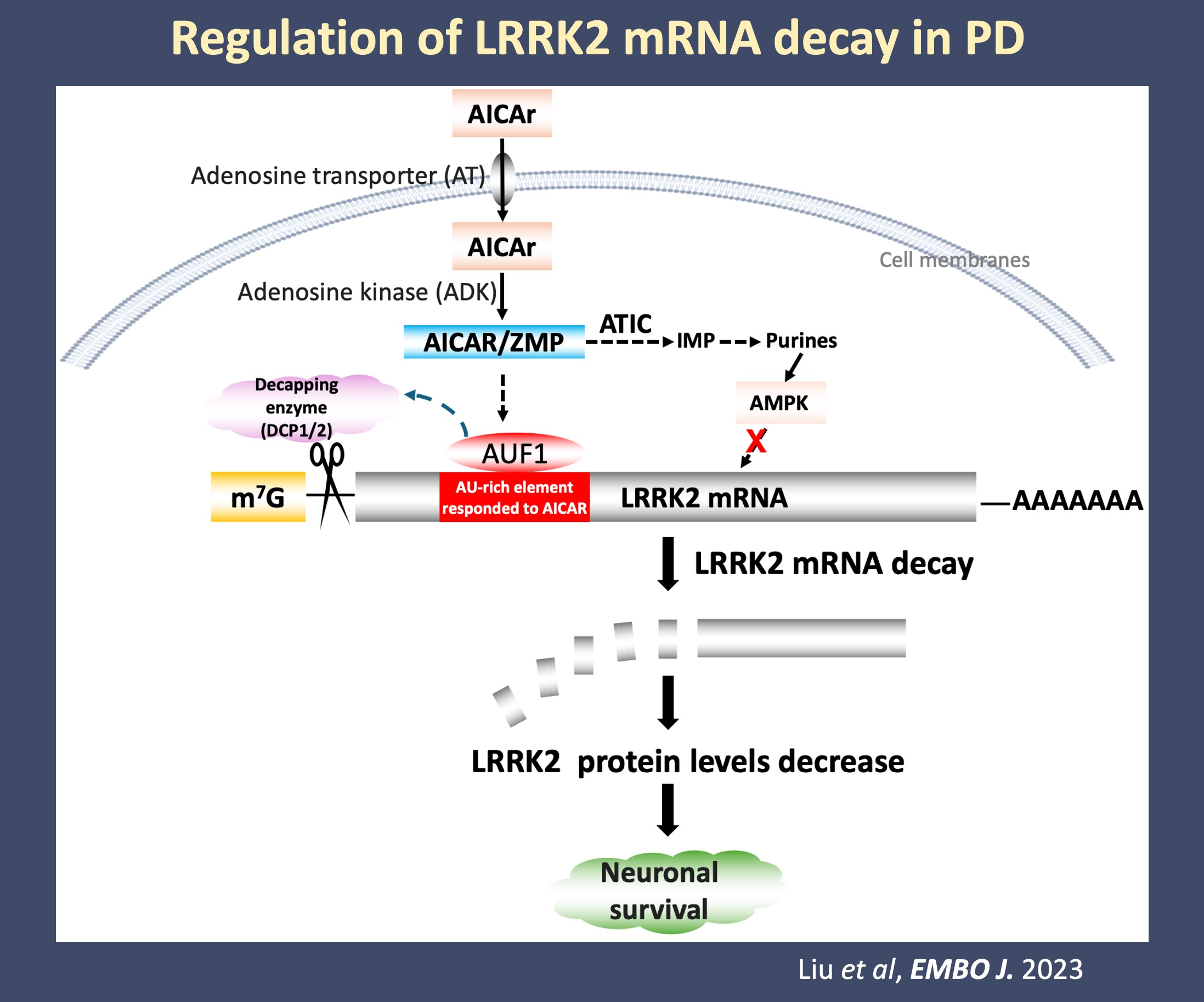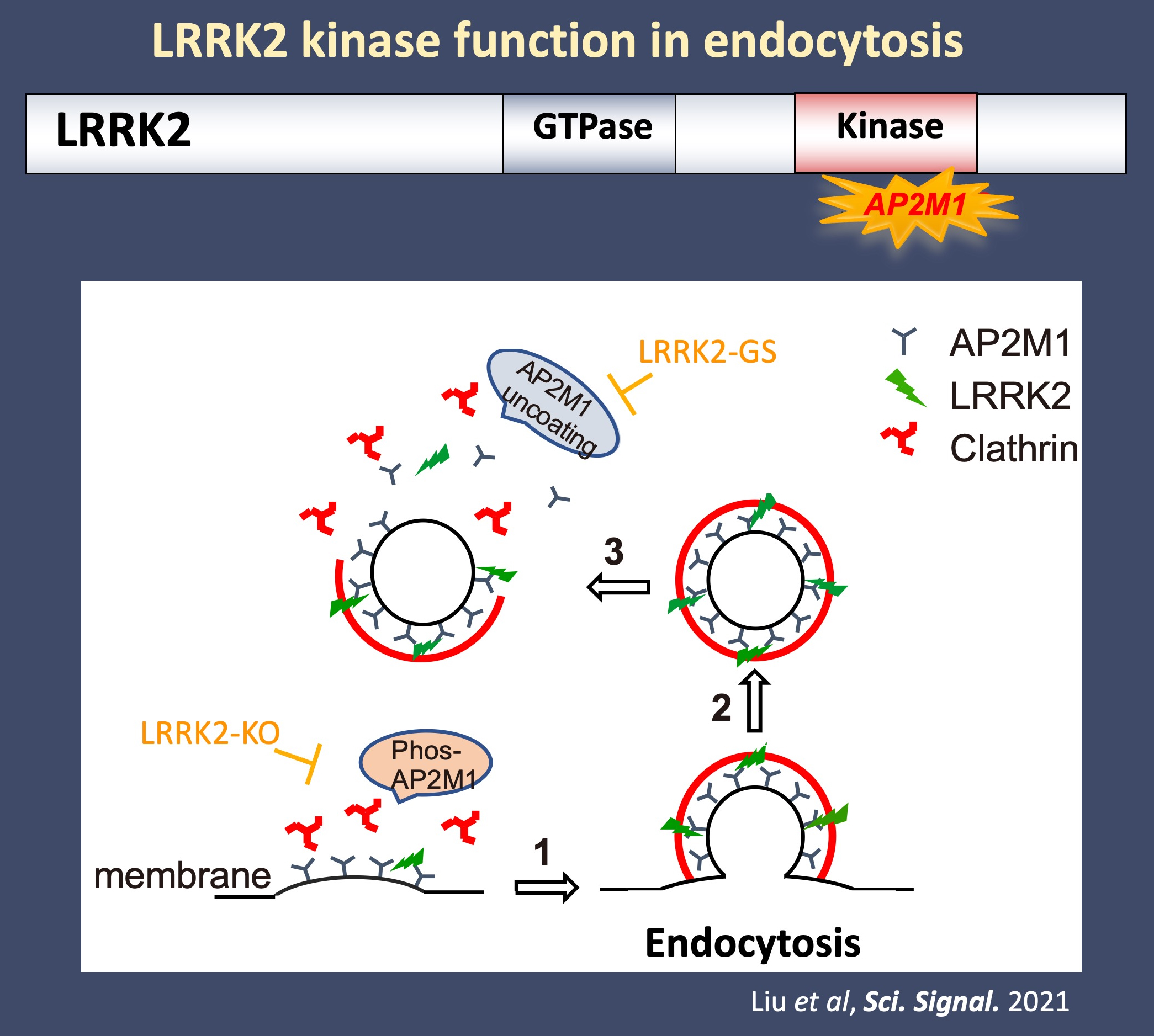Molecular Pathophysiology of Parkinson’s disease
 Parkinson’s disease (PD) is the most common movement disorder and the second most common neurodegenerative disorder after Alzheimer’s disease. Currently, there is no effective therapy. The Xiong lab aims to understand the mechanisms underlying PD with a specific focus on four major questions:
Parkinson’s disease (PD) is the most common movement disorder and the second most common neurodegenerative disorder after Alzheimer’s disease. Currently, there is no effective therapy. The Xiong lab aims to understand the mechanisms underlying PD with a specific focus on four major questions:
1) How do PD-associated proteins contribute to dopaminergic (DA) neurodegeneration in SNpc? Specifically, the function of LRRK2, mutations of which are the most common genetic causes of PD, and GCase (Glucocerebrosidase, encoded by GBA1), mutations of which are the most common risk factors for PD.
2) What are the new molecules and how are they involved in PD pathogenesis?
3) What are the common cellular pathways leading to PD? Specifically on ER homeostasis and endolysosomal trafficking pathways.
4) How to develop the pharmacological strategies to slow down DA neurodegeneration and the PD symptoms?
To answer these questions, Dr. Xiong’s group has developed various model systems from single-cell organism budding yeast to Drosophila, mice, and primary and human neuronal cultures. Using these systems, the lab’s general approaches are to use a powerful combination of genetics, molecular biology, viral approaches, and behavioral analysis to decipher the molecular mechanisms underlying neurodegenerative diseases in humans. The lab’s research goal is to identify molecular therapeutic targets that will ultimately lead to the development of effective biomarkers and treatments for PD.
The Xiong lab welcomes motivated postdocs and graduate students to join the team.


